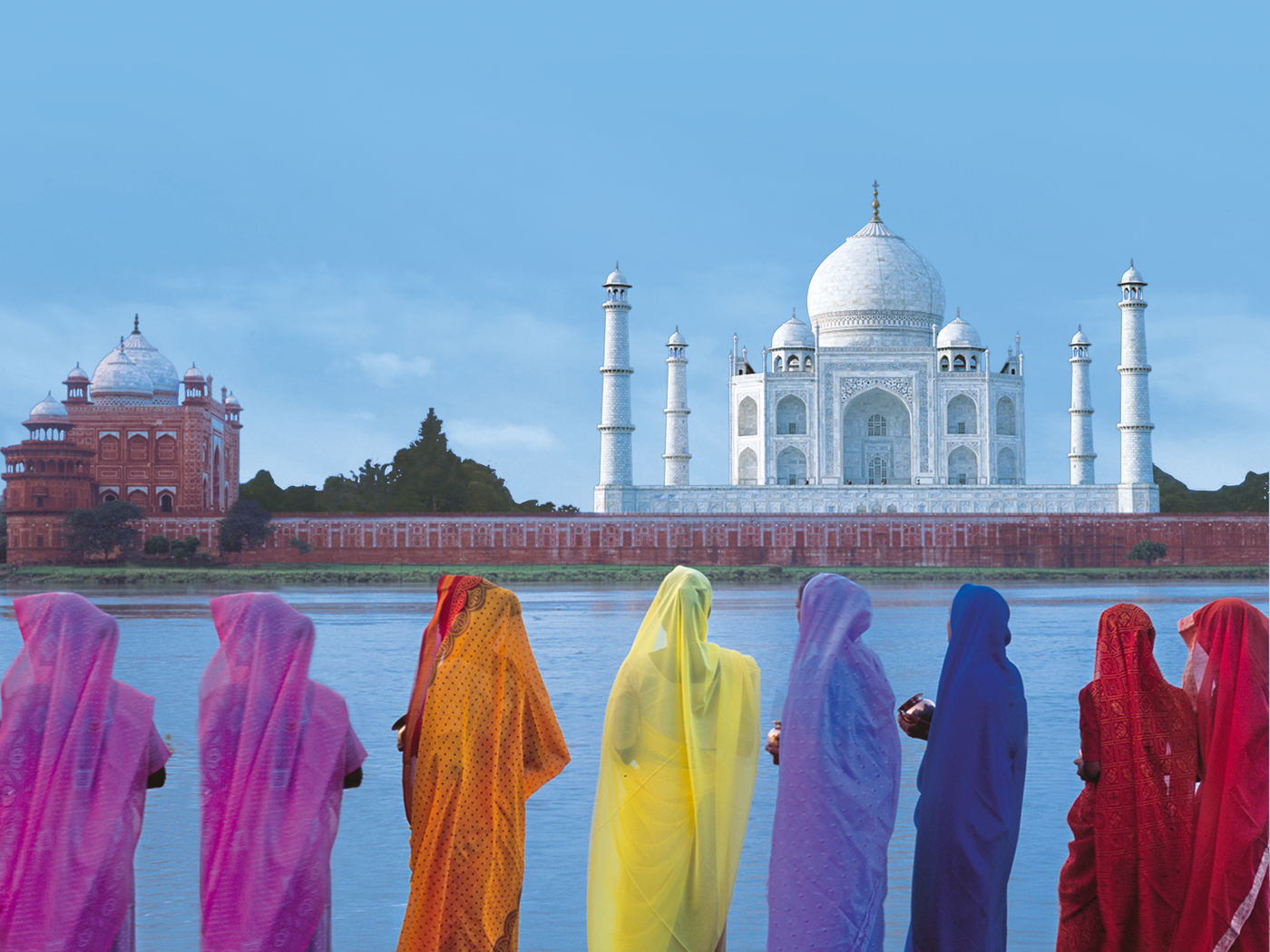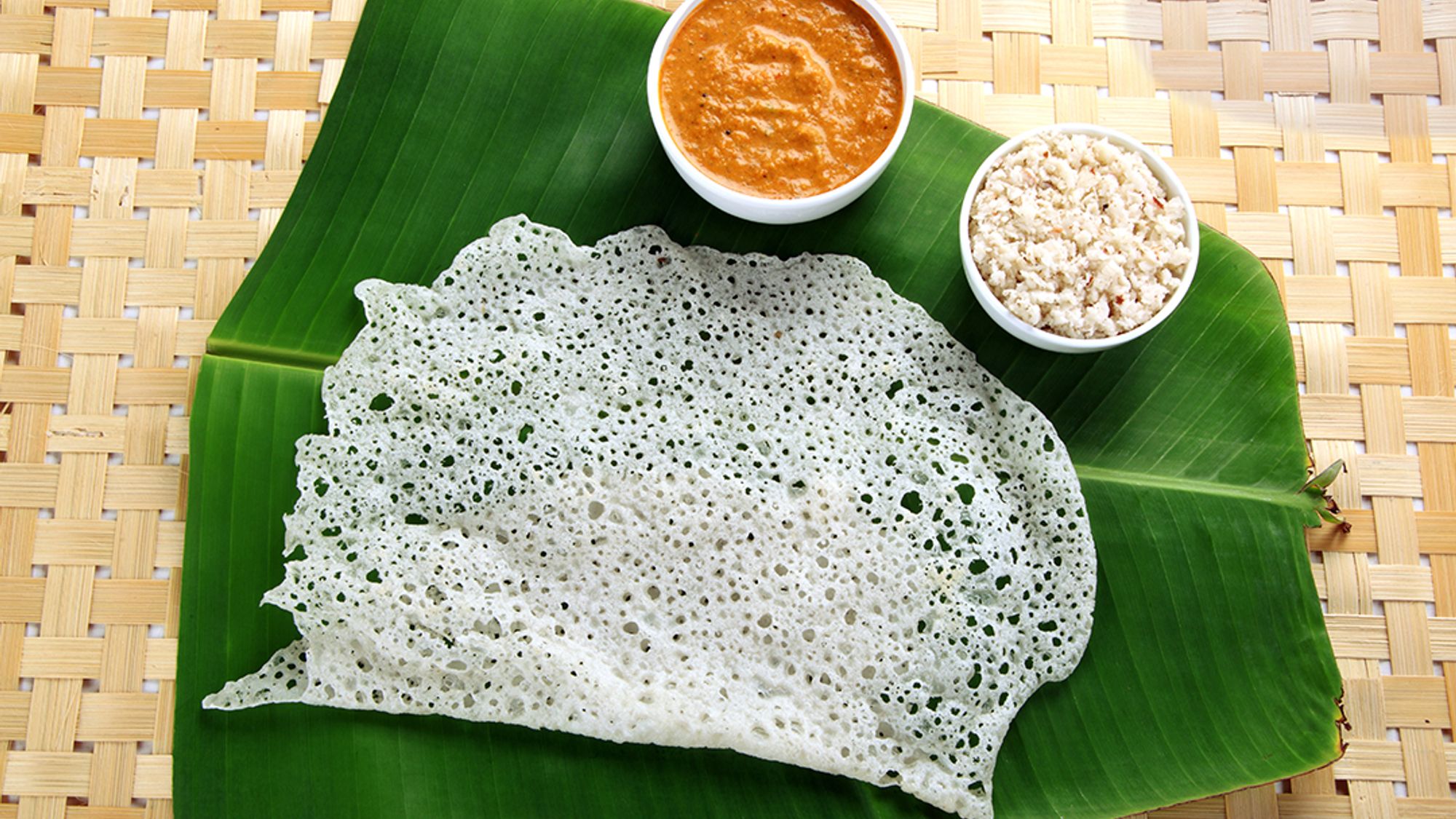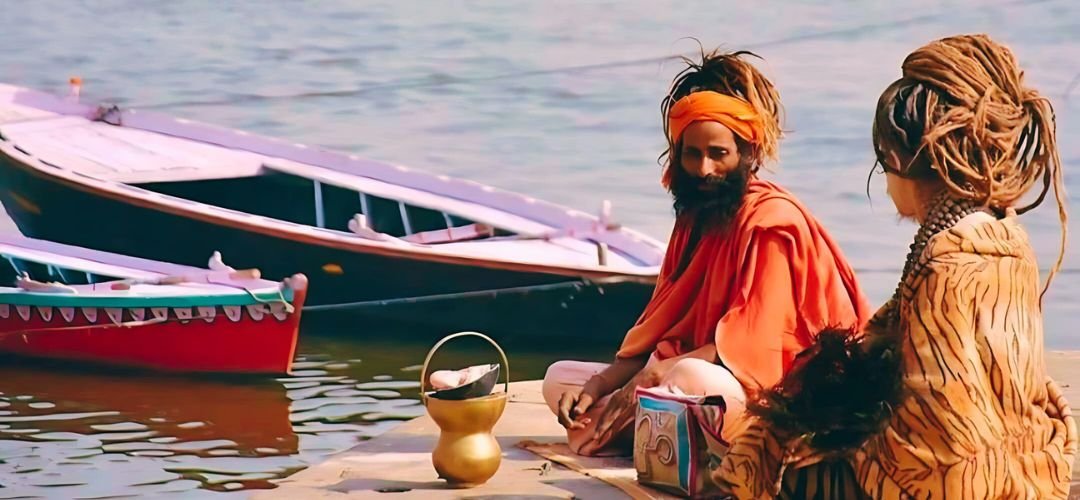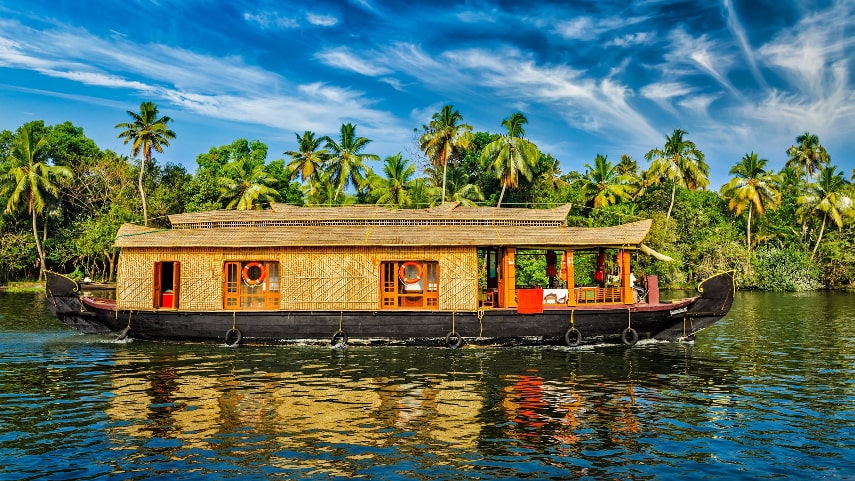In the Heart of India: Must-Do Cultural Experiences for Every Traveller

Discovering the Heart of India
Introduction to Indian Culture
India, often celebrated as a land of diversity, is an intricate tapestry woven from multiple threads of languages, religions, traditions, and cuisines. The culture resonates with a deep sense of history and spirituality, inviting you to uncover its myriad facets. From the vibrant chaos of bustling markets to the serene silence of ancient temples, each experience offers a glimpse into the profound soul of the nation.
- Languages: India is home to over 1,600 languages, with Hindi and English being the most widely spoken.
- Religions: The country is the birthplace of major religions like Hinduism, Buddhism, Jainism, and Sikhism.
- Festivals: With numerous festivals throughout the year, India is a land of celebrations, showcasing its rich customs and traditions.
Significance of Central India
Central India, often referred to as the heart of the country, holds both historical and cultural significance. It is strategically located, connecting the northern and southern parts of India, making it a melting pot of different cultures and traditions.
This region is renowned for:
- Historical Heritage: Home to exquisite monuments like the Khajuraho Temples and the mesmerizing forts of Mandu.
- Natural Beauty: The landscapes vary from lush forests to arid plateaus, ripe for exploration.
- Tribal Cultures: Boasting diverse tribal communities, Central India offers rich customs that have been preserved over generations.
Immerse yourself in the heart of India, where every moment unveils stories waiting to be discovered, and the essence of the nation comes alive.

Cultural Immersion Through Festivals
Diwali: The Festival of Lights
As you delve deeper into India's cultural landscape, one of the most enchanting experiences is participating in Diwali, the Festival of Lights. Celebrated by millions, this festival symbolises the triumph of light over darkness and good over evil. Homes are adorned with diyas (oil lamps) and vibrant rangoli patterns, creating a warm and inviting atmosphere.
- Traditions: Fireworks, sweet treats, and family gatherings are hallmarks of Diwali.
- Anecdote: Imagine walking through a bustling market, where the aroma of freshly made sweets fills the air, and locals grace each other with wishes of prosperity while lighting sparklers.
Holi: The Festival of Colors
Next on the festival roster is Holi, known as the Festival of Colors. This exuberant celebration marks the arrival of spring and signifies love and unity. Participants engage in playful colour fights, tossing vibrant powders at one another, creating a kaleidoscope of joyful chaos.
- Essence: Holi is all about breaking barriers and celebrating with friends and strangers alike.
- Example: Picture yourself dancing in the streets, surrounded by laughter, as bursts of colour fill the air, leaving you with an unforgettable, jubilant spirit.
Navratri: Celebrating the Goddess
Lastly, Navratri is a nine-night festival dedicated to the divine feminine. It showcases the different forms of the goddess Durga and involves folk dances, prayers, and vibrant celebrations across various communities.
- Activities: Garba and Dandiya, traditional dance forms, invite participation from all ages.
- Experience: The energy is infectious; you’ll find locals inviting you to join the dances, symbolising a communal celebration of devotion and joy.
Participating in these festivals offers an unparalleled opportunity to connect with the heart of Indian culture, enriching your experience and creating lifelong memories.

Exploring Architectural Wonders
Taj Mahal: A Symbol of Love
Transitioning from the vibrant celebrations of festivals, the architectural landscape of India captivates with masterpieces that speak volumes of its rich history. The Taj Mahal, often described as the epitome of love, is a breathtaking ivory-white marble mausoleum situated in Agra. Built by Emperor Shah Jahan in memory of his beloved wife, Mumtaz Mahal, it stands as a testament to eternal love.
- Design: Its intricate carvings, stunning gardens, and iconic dome draw people from around the globe.
- Experience: As the sun rises, witnessing the Taj bathed in soft golden light is a moment to cherish, leaving you in awe of its beauty and the story behind it.
Khajuraho Temples: Marvels of Erotica
Next, venture to the Khajuraho Temples, a UNESCO World Heritage Site that showcases the brilliance of Indian temple architecture through its erotic sculptures. These temples, built between 950 and 1050 AD, display intricate carvings that celebrate love and sensuality.
- Artistry: The detailed workmanship invites contemplation, sparking discussions on the acceptance of intimacy in ancient Indian culture.
- Insight: Wander through these ancient structures, and you’ll find that each figure tells a unique story, engaging your imagination and curiosity.
Hampi: Ruins of an Empire
Lastly, exploring Hampi, the remnants of the once-thriving Vijayanagara Empire, feels like stepping back in time. With its stunning rock formations and sprawling ruins, Hampi is a treasure trove of history.
- Highlights: From the Virupaksha Temple to the Royal Enclosure, each site narrates tales of grandeur and architectural brilliance.
- Adventure: Trekking the hills offers panoramic views that leave you breathless as you reflect on the life that once flourished in this remarkable city.
Exploring these architectural wonders immerses you in a journey through India's past, where each structure holds a story waiting to be discovered.

Indulging in Culinary Delights
Introduction to Indian Cuisine
As you savour the architectural marvels of India, don’t miss out on the incredible culinary delights waiting to please your palate. Indian cuisine is not just about flavours; it's a celebration of diverse ingredients, regional cooking techniques, and age-old traditions. From the warmth of spices to the vibrant colours of dishes, every meal tells a story, inviting you to explore the nation's rich culinary heritage.
- Spices: India is famous for its extensive use of spices, which not only enhance flavour but also offer health benefits.
- Variety: With over 28 states, each region boasts its own distinct dishes, making every meal a unique experience.
Regional Specialties to Try
Exploring India’s regional specialities is like embarking on a delicious adventure. Here are some must-try dishes:
- North India: Don't leave without trying butter chicken, a creamy and rich dish served with naan or rice, and taste the street-side delicacies like chaat.
- South India: Dive into a plate of dosa, a crispy rice crepe filled with spiced potatoes, accompanied by coconut chutney and sambar.
- East India: Sample the delectable sweets of Bengal, like rasgulla and sandesh, which are an absolute delight after a meal.
- West India: If you find yourself in Gujarat, treat your taste buds to a thali, a platter filled with diverse vegetarian dishes bursting with flavour.
These regional treasures showcase the heart and soul of Indian cuisine, inviting you to indulge in a culinary journey that you'll remember long after your travels. Each bite becomes a memory, making your exploration of India's culture even more enriching and delightful.

Traditional Arts and Crafts
Madhubani Painting: Bihar's Heritage
Continuing your exploration of India's rich culture, you'll discover the stunning world of traditional arts and crafts, each representing centuries of heritage. Begin with the Madhubani painting originating from Bihar. This vibrant art form is characterised by intricate patterns, bold colours, and themes that often draw inspiration from nature, mythology, and folklore.
- Technique: Traditionally created by women using fingers, twigs, and brushes made from bush, these paintings are highly detailed.
- Experience: Imagine visiting a small village in Bihar, where local artisans invite you to witness their creative process, sharing stories behind each brush stroke, making every piece incredibly meaningful.
Patola Sarees: Gujarati Weaving
Next, let’s travel to Gujarat, known for its exquisite Patola sarees. These double-ikat silk sarees are not just garments; they are a symbol of luxury and artistry. The weaving process is meticulous, often taking months to complete a single saree.
- Designs: Beautifully crafted with geometric patterns and vibrant colours, each Patola saree is unique.
- Shopping Tip: While in Gujarat, don’t miss the chance to visit local markets where talented weavers demonstrate their craft and help you pick the perfect piece to take home.
Phulkari Embroidery: Punjab's Finest
Lastly, immerse yourself in the colourful world of Phulkari embroidery from Punjab. This intricate craft involves vibrant floral patterns stitched onto fabric, often seen in dupattas and shawls.
- Meaning: The word "Phulkari" translates to "flower work," aptly representing the nature-inspired motifs.
- Cultural Insight: Engage with local artisans who are eager to share how this craft reflects the region's traditions and celebrations, turning everyday items into pieces of art.
Together, these traditional arts and crafts tell the story of India’s cultural diversity, providing a deeper understanding of its heritage and the passion that drives its artisans. As you appreciate these creations, you'll find a connection to the heart and soul of Indian craftsmanship.

Interacting with Local Communities
Rural Homestays and Experiences
As you continue your cultural journey through India, consider engaging with local communities for an authentic experience that enriches your understanding of the country. One of the best ways to do this is by opting for rural homestays.
Staying with a local family allows you to witness daily life up close and personal. You might find yourself:
- Cooking Together: Learn to prepare traditional dishes alongside your hosts, sharing stories and laughter as you chop, stir, and taste.
- Exploring the Countryside: Take guided walks through lush farms or vibrant villages, discovering the breathtaking natural beauty and local traditions.
For instance, imagine waking up to the sound of roosters, enjoying a hearty breakfast of freshly made parathas, and engaging in lively conversations with your hosts about their customs and lifestyles.
Volunteering Opportunities
If you’re looking to make a positive impact during your stay, consider volunteering opportunities available in many regions. Engaging with community-driven projects not only helps local residents but also allows you to form meaningful connections.
- Teaching Initiatives: Many organisations seek volunteers to teach English or other subjects in local schools, offering you a chance to make a difference while learning from the students as well.
- Eco-Tourism Projects: Participate in conservation efforts that protect the environment and wildlife, allowing you to explore India’s stunning landscapes up close.
By immersing yourself in rural homestays and volunteering, you not only gain firsthand insights into local cultures but also foster bonds that transcend mere visits. This genuine connection fosters a sense of belonging and understanding, leaving you with unforgettable memories that resonate long after you leave.
Healing and Wellness Practices
Ayurveda: Ancient Healthcare System
Continuing your journey into the heart of Indian culture, no exploration is complete without delving into the profound healing and wellness practices that have been cherished for centuries. Ayurveda, an ancient healthcare system, focuses on balancing the body, mind, and spirit through natural remedies and holistic therapies.
- Principles: Rooted in the belief that everyone is unique, Ayurveda personalised treatments based on your individual constitution or dosha.
- Experiential Learning: Imagine stepping into a serene Ayurvedic centre, where you are greeted with calming aromas and soft music. You may be offered herbal teas and engaging consultations to discover tailored treatments focusing on detoxification and rejuvenation.
Yoga and Meditation Retreats
Alongside Ayurveda, yoga and meditation play a crucial role in promoting well-being. The tranquil landscapes of India offer an array of yoga and meditation retreats that invite you to reconnect with yourself.
- Benefits: Participants often seek these retreats to reduce stress, increase flexibility, and cultivate mindfulness.
- In Practice: Picture yourself amidst the lush greenery, surrounded by seasoned instructors guiding you through asanas (postures) while the gentle breeze flows around you, leaving you with a sense of inner peace.
Many retreats also incorporate meditative practices, teaching you techniques to harness the power of breath and still the mind. As you experience these profound practices, you'll not only improve your physical well-being but also nurture your emotional and spiritual health.
Indulging in these ancient practices provides a deeper understanding of self-care, inviting you to take home valuable lessons in wellness that transcend borders.
Conservation and Wildlife Sanctuaries
Ranthambore National Park: Home of Tigers
As you continue your exploration of India's natural beauty, a visit to the country’s renowned wildlife sanctuaries is a must. Ranthambore National Park, one of the largest in India, offers an incredible opportunity to witness the majestic Bengal tiger in its natural habitat.
- Safari Experience: Imagine embarking on an early morning safari, the golden sun rising over the horizon as you traverse the rugged terrain. The thrill of spotting a tiger lounging under a tree or prowling through the tall grass is indescribable.
- Biodiversity: Beyond tigers, Ranthambore is home to diverse wildlife, including leopards, deer, and a variety of birds, making every safari an adventure filled with surprises.
Kanha Tiger Reserve: Land of the Jungle Book
Next, venture to Kanha Tiger Reserve, a place that inspired Rudyard Kipling’s "The Jungle Book." This stunning sanctuary is celebrated for its exceptional conservation efforts and a thriving population of tigers, along with other magnificent wildlife.
- Natural Splendor: Picture walking through lush sal forests and vast meadows, where you might catch sight of barasingha, the swamp deer unique to the region.
- Engagement: Join guided nature walks that deepen your understanding of the ecosystem and the importance of conservation in preserving these habitats.
Both Ranthambore and Kanha highlight the incredible biodiversity of India and underscore the significance of wildlife conservation. By visiting these parks, you contribute to their preservation and take home unforgettable memories of moments spent in the wild, instilling a deeper appreciation for nature's wonders. This connection to wildlife enriches your experience and instils a sense of responsibility for protecting these beautiful environments for future generations.
Preserving Cultural Heritage
UNESCO World Heritage Sites in Central India
As you continue your journey through India, it’s essential to recognise the importance of preserving cultural heritage, particularly through its UNESCO World Heritage Sites located in Central India. These sites not only reflect the architectural brilliance of the past but also tell poignant stories of the civilizations that thrived here.
- Khajuraho Temples: Known for their intricate sculptures and erotic carvings, these temples represent a remarkable blend of spirituality and art, attracting art enthusiasts and historians alike.
- Sanchi Stupas: The ancient Buddhist stupas and monolithic pillars in Sanchi serve as a testament to India’s rich philosophical and cultural history.
Imagine walking through these majestic sites, where your footsteps echo centuries of history, and each corner holds a tale waiting to be unveiled.
The Role of Tourism in Cultural Preservation
Tourism plays a crucial role in the preservation of these cultural treasures. By visiting, you create a demand that supports conservation efforts and local economies.
- Economic Benefits: Entrance fees and guided tours contribute to funds aimed at maintaining the sites and educating the public about their significance.
- Community Involvement: Engaging with local artisans and participating in cultural workshops fosters appreciation for traditional crafts and encourages their continuation.
As you soak in the beauty and history of these UNESCO sites, you become part of a larger movement that champions cultural preservation. Your choices as a traveller can lead to sustainable tourism, ensuring that these extraordinary legacies of India's heritage endure for future generations to explore and admire. This sense of connection to the past highlights not just the beauty of these sites but also the shared responsibility we hold in keeping their stories alive.

Conclusion and Recommendations
Recap of Cultural Experiences
Reflecting on your journey through India, you have explored a kaleidoscope of cultural experiences that reveal the country's rich heritage. From the vibrant festivals like Diwali and Holi that ignite joy and unity to the breathtaking architectural wonders like the Taj Mahal and the Khajuraho Temples, each moment has been a testament to India’s artistic spirit.
You’ve ventured into rural communities, immersing yourself in local traditions through homestays and volunteering, and have embraced the healing practices of Ayurveda and yoga, nurturing your body and soul. These experiences not only offered insights into the ways of life but also built connections with the warm-hearted people of this incredible nation.
Tips for an Authentic Indian Journey
As you prepare for your trip or consider future explorations, here are some tips to ensure an authentic Indian experience:
- Embrace Local Cuisine: Hanker for the local delicacies in every region, and don’t shy away from street food; but do choose stalls that seem popular and bustling with locals.
- Learn Basic Phrases: Even a few words in Hindi or the local language can go a long way in making connections with the people you meet.
- Dress Modestly: Respect cultural norms by dressing modestly, particularly when visiting religious sites.
- Take Your Time: Allow for spontaneity in your travels. Some of the best experiences come from unplanned moments and serendipitous encounters.
By incorporating these suggestions into your journey, you’ll not only enrich your own travel experience but also contribute to the communities you visit, leaving a positive impact on this vibrant tapestry of cultures. Ultimately, India invites you to discover its soul, creating memories that will last a lifetime.
